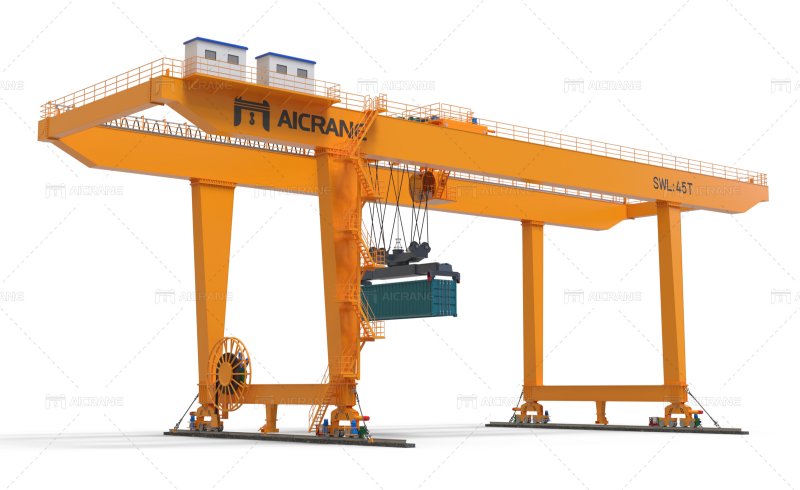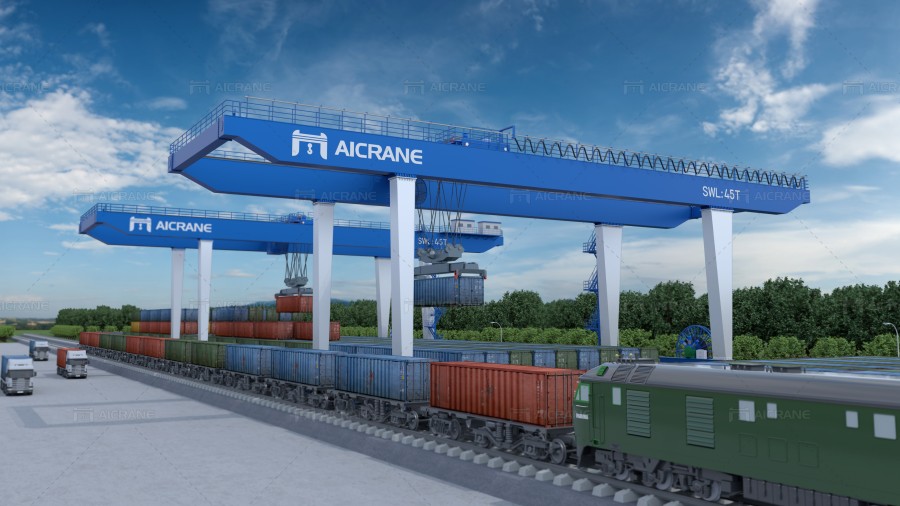In the realm of industrial logistics and container handling, rail-mounted stacking cranes have emerged as a transformative technology, reshaping the efficiency and capabilities of modern warehouses, distribution centers, and container terminals. These specialized cranes, designed to operate along rail tracks, play a pivotal role in optimizing storage, retrieval, and transportation processes. Let’s delve into the significance of rail mounted stacking cranes and their impact on industrial applications.
The Role of Rail-Mounted Stacking Cranes
Rail-mounted stacking cranes are specifically engineered to navigate along fixed railway tracks within industrial facilities. Their primary function is to efficiently manage the stacking and movement of containers or palletized goods within storage yards or terminals. Unlike traditional mobile cranes, rail mounted cranes offer a dedicated and streamlined approach to material handling, leveraging the advantages of rail infrastructure for enhanced productivity.

Enhanced Efficiency and Space Utilization
One of the key advantages of rail-mounted stacking cranes lies in their ability to optimize space utilization within industrial environments. By operating on predefined rail tracks, these cranes can access narrow aisles and densely packed storage areas with precision. This capability minimizes the footprint required for maneuvering and storage, allowing facilities to maximize storage capacity without compromising accessibility.
Rail-mounted stacking cranes excel in high-density storage applications, such as container terminals and automated warehouses. Their systematic approach to container stacking and retrieval minimizes congestion and facilitates smooth cargo flow, contributing to overall operational efficiency and throughput.
Streamlined Operations and Automation
Rail mounted stacking cranes integrate seamlessly into automated material handling systems, enabling continuous and streamlined operations. These gantry lifting cranes can be equipped with advanced technologies such as automated guidance systems, RFID (Radio Frequency Identification) tracking, and remote monitoring capabilities. Such automation not only enhances operational efficiency but also reduces labor costs and minimizes the risk of human error.
Automation plays a crucial role in optimizing the performance of rail-mounted stacking cranes. Real-time data collection and analysis enable predictive maintenance, ensuring optimal crane uptime and reliability. Furthermore, automated stacking and retrieval processes support just-in-time inventory management, facilitating faster order fulfillment and delivery cycles.

Versatility Across Industries
Rail-mounted stacking cranes are highly versatile and find applications across various industries beyond traditional container terminals. They are utilized in manufacturing facilities, automotive assembly plants, and distribution centers to manage raw materials, components, and finished products. The ability to operate on rails makes these cranes suitable for indoor and outdoor environments, adapting to diverse operational requirements.
In industries where space constraints and operational efficiency are critical factors, rail mounted stacking cranes offer a strategic advantage. Their ability to stack containers or goods vertically maximizes cubic storage capacity, optimizing floor space utilization and reducing the need for additional expansion.
Environmental Considerations
Rail-mounted stacking cranes contribute to sustainability efforts within industrial sectors by minimizing energy consumption and reducing carbon emissions. Compared to traditional forklifts or mobile cranes, which rely on diesel engines, electrically powered rail-mounted cranes offer a cleaner and more environmentally friendly alternative. Electric cranes also generate less noise pollution, enhancing workplace safety and minimizing disruptions in densely populated areas.
Future Trends and Innovations
Looking ahead, the evolution of rail-mounted stacking cranes is driven by advancements in automation, connectivity, and data analytics. Industry 4.0 technologies, such as IoT (Internet of Things) sensors and cloud-based platforms, are transforming crane operations by enabling real-time monitoring, predictive maintenance, and intelligent decision-making.
Moreover, the integration of artificial intelligence (AI) and machine learning algorithms is enhancing the cognitive capabilities of rail-mounted stacking cranes, optimizing path planning and load optimization. These innovations promise to further elevate productivity and operational efficiency, paving the way for a new era of smart industrial logistics.
Conclusion
Rail-mounted stacking cranes represent a cornerstone of efficient and sustainable material handling in industrial applications. Their ability to navigate fixed rail tracks, coupled with advanced automation and space optimization capabilities, makes them indispensable assets for modern warehouses, distribution centers, and container terminals. As industries embrace digital transformation and adopt innovative technologies, rail-mounted stacking cranes are poised to play an increasingly pivotal role in driving productivity and competitiveness across the global supply chain. To know more details about this container crane, you are welcomed to check this https://aicranemachine.com/.